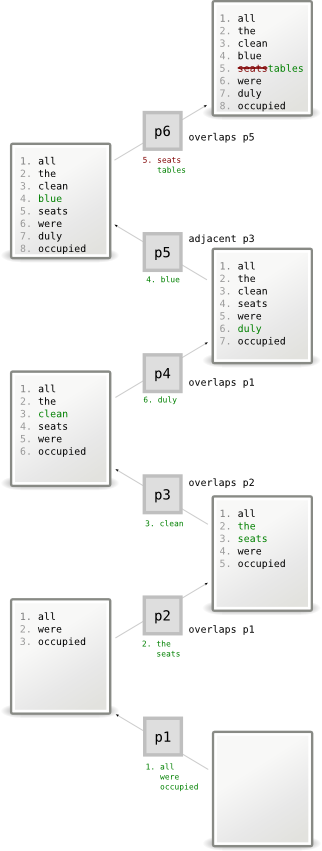Internals/Commuting
Hunk patches
Adjacent hunks
Adjacent hunks are not allowed to commute because there is no sensible way to preserve their line-number order under commutation.

To elaborate on this, it helps to say that when we have two hunk patches on the same file, we can think of one of them as being “northern” (nearer the top of the file), and the other as being “southern” (nearer the bottom). Consider for example p4 and p5 in the diagram above (*). Here we can say that p4 is the southern patch (@line6 +duty), whereas p5 is the northern patch (@line4 +clean). The northern patch can always be seen as adding (or removing!) padding to the textual context on which southern patch applies. This isn’t so obvious because in this particular example, the northern patch occurs after the southern patch. But if we commuted them we have to adjust p4 to (@7+duty) while leaving p5 intact. The southern patch shifts (it’s affected by the padding) and the northern patch always stays the same (it provides the padding so what does it care?).
Reasoning on static northern patches and shifty southern patches works so long as the patches are non-adjacent. Suppose that after p5 we had a p6b (@5+plastic => all the clean plastic seats were duly occupied). If we followed the same reasoning about leaving the northerly p5 alone (@4+clean), and shifting the southern p6b back to account for the missing padding, we’d get two patches that apply at the same line… To be clear, having two successive hunk patches at the same line is not intrinsically bad; but allowing two such patches to commute creates an ambiguity under cherry picking: Is it “all the clean plastic seats were duly occupied” or “all the plastic clean seats were duly occupied”? We wouldn’t be able tell because our compass would be broken!
